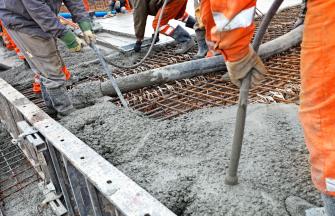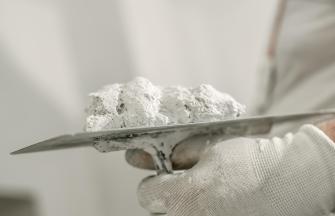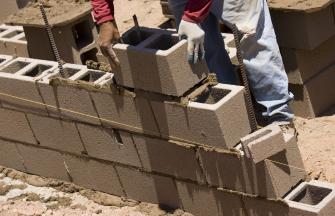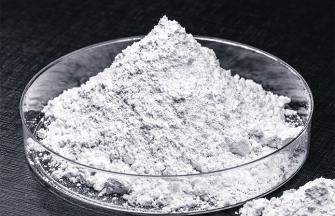
Mason's Lime: a short introduction
Lime has been used in masonry applications for at least 6000 years, when lime mortars were used by the Ancient Egyptians to plaster the pyramids at Giza. Mohanjo-Daro in the Indus Valley was built using lime mortar about 4000 years ago. The Ancient Greeks used a fine lime plaster to create the Parthenon, among other buildings that survive to this day, while its use continued to be widespread through the Roman period. The Pont du Gard aqueduct at Nimes in southern France was built in 18CE with a hydraulic lime mortar and remains waterproof to this day.
Today, ASTM Standard C207-18 covers four hydrated limes for masonry purposes:
- Type N — normal hydrated lime
- Type S — special hydrated lime
- Type NA — normal air-entraining hydrated lime
- Type SA — special air-entraining hydrated lime
This article will focus on Type S hydrated lime (also called mason’s lime) and its use in the construction industry, although some novel uses, outside of its traditional use in mortar, will also be noted briefly.
What is Type S hydrated lime?
Type S refers to a hydrated lime that has been produced from a dolomitic limestone, i.e., a limestone that contains both calcium carbonate (CaCO3) and calcium magnesium carbonate (CaMg(CO3)2. The dolomitic limestone containing calcium carbonate and magnesium carbonate is crushed and calcined to produce a dolomitic quicklime/CaO•MgO/calcium oxide, which has a similar consistency to sand particles. Next the crushed powder containing both calcium carbonate and magnesium carbonate is hydrated under pressure. This hydration crushed dolomitic lime forms a hydrated lime that contains calcium hydroxide (Ca(OH)2) and magnesium oxides (Mg(OH)2).
The presence of magnesium oxides such as magnesium hydroxide is only formed when hydration takes place under pressure. This sets Type S hydrated lime apart from other hydrated lime products, and provides a number of benefits when used in masonry applications.
The benefits of Type S hydrated lime
Type S hydrated lime is defined by a number of physical properties including:
- Type S hydrated lime has a fine particle size
- Type S hydrated lime has a plate-like particle shape
- Type S hydrated lime has a limited oxide content
- Type S hydrated lime has a potential to recarbonate when exposed to carbon dioxide
When Type S lime is added to mortar, these properties provide the following benefits.
Better workability
Perhaps the most important property for the mason, workability describes how a mortar feels on the trowel and the ease with which it can be applied. It is directly related to the rate of construction, since mortars with poor workability will slow the speed at which a mason is able to work.
Both the fine particle size and the shape of Type S hydrated lime improve mortar workability:
- Fine particles of hydrated lime enhance both water retention and sand-carrying capacity, resulting in a mortar that is easier to trowel and better fills the joints. As a result of this addition of hydrated lime and enhanced water retention, more bricks can be laid before tooling, and the need for retempering is all but eliminated
- The plate-like shape of Type S hydrated lime particles provides both a lubricating effect and an essential ‘stickiness’ (the ability of the mortar to hold onto the masonry to which it is applied) to the mortar. This addition of hydrated lime also aids the speed of application and the productivity of your worksite.
Improved bonding
Fine hydrated lime particles penetrate further into masonry than the coarser cement particles. This penetration of hydrated lime particles forms a better mechanical lock and stronger mortar-masonry bond.
Durability and autogenous healing
Over time, Type S hydrated lime particles exposed to air react with carbon dioxide. This reaction with air and carbon dioxide causes the hydrated lime particles to revert back to their natural dry powder carbonate form. This reaction — known as recarbonation — means the mortar actually grows stronger with age as this air and carbon dioxide reaction is all but stoppable.
This reaction also enables the mortar to self-heal hairline cracks. The hairline cracks expose more Type S lime particles to air, and the recarbonation of these particles then seals the crack.
Greater elasticity
High-cement mortars without hydrated lime are typically too brittle to adjust with the structure and may crack under loading. Adding Type S hydrated lime improves the elasticity of the mortar, allowing it to adjust under load, without injuring the bond.
Waterproofing
Enhanced workability and improved bonding provide a natural waterproofing capacity to mortars containing Type S hydrated lime. This enhanced workability caused by the hydrated lime may help reduce — or even eliminate — the need to add expensive waterproofing and plasticity admixtures to the mortar, as is traditionally required for high-cement mortars without hydrated lime.
Advantages for white and colored masonry
The limited calcium oxide content of Type S hydrated lime gives it a brilliant white color. This makes the hydrated lime an appropriate additive when a white finish is required of the masonry, and reduces the quantity of pigment needed for a colored finish.
Continuing with the visual benefits of Type S hydrated lime, there is evidence that high calcium lime mortars reduce the tendency toward unsightly efflorescence in masonry work.
Type S hydrated lime beyond mortar
Although its main use is as an additive in mortars, Carmeuse has recently investigated the use of hydrated dolomitic lime, such as Type S lime, in other applications:
- As part of a combination of additives to remove dissolved and colloidal silica from water to enable its use as boiler feedwater,in particular for surface water sources such as users of Great Lakes water.
- As a treatment for fly ash, particularly fly ash from energy-from-waste processes, which needs to be treated with an alkali (base) material to prevent the leaching of certain metals. Hydrated dolomitic lime provides the appropriate pH adjustment for optimum ash treatment.
- Type S hydrated lime is also beneficial in other industrial applications such as wastewater treatment, and chemical processing.
Going deeper into Type S hydrated lime
For more on Type S hydrated lime, check out Miracle Morta-Lok® from Carmeuse, or read more about the uses of lime in other civil engineering and construction applications.
For tailored advice on your specific application, you can also connect with us directly. Our experienced team is always on hand and happy to help you get the most out of your lime.




